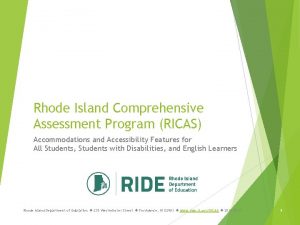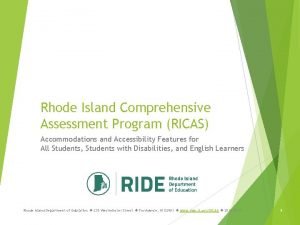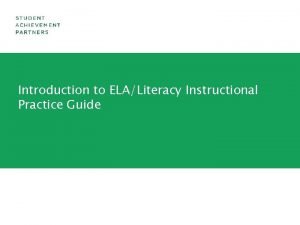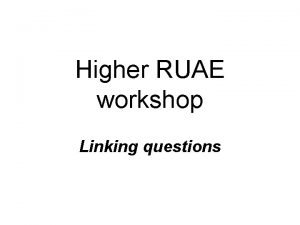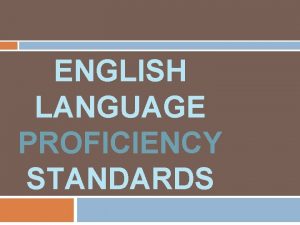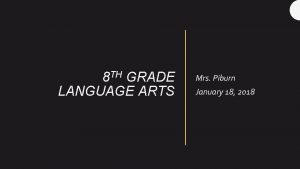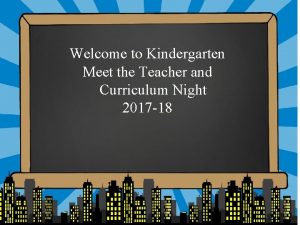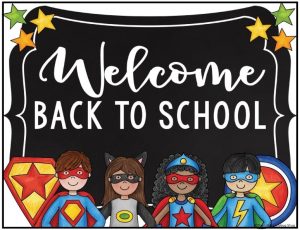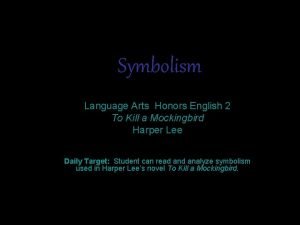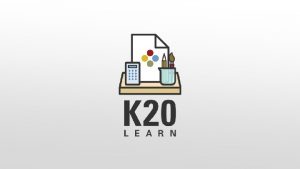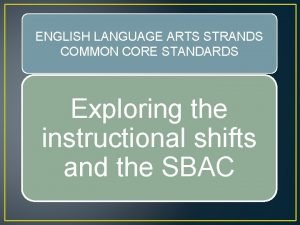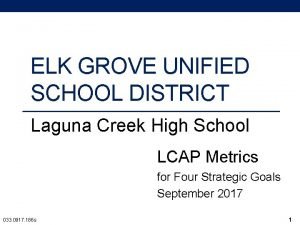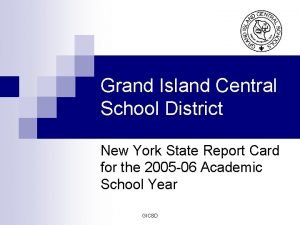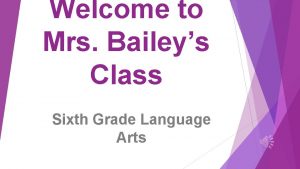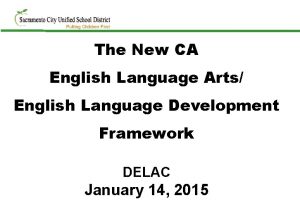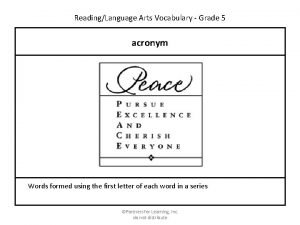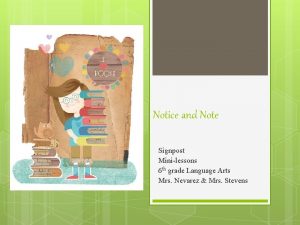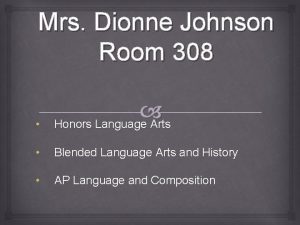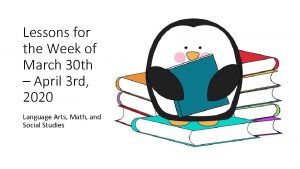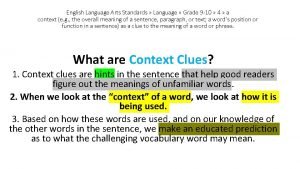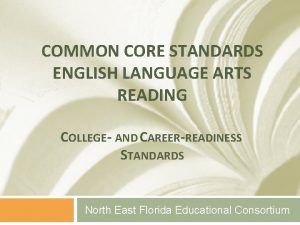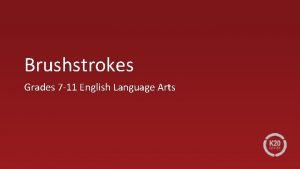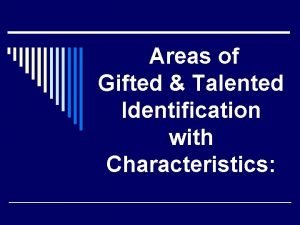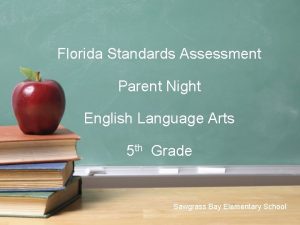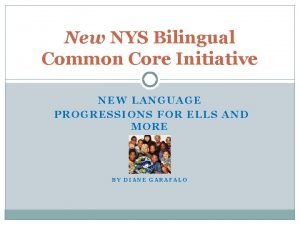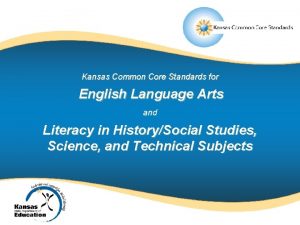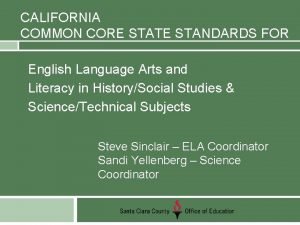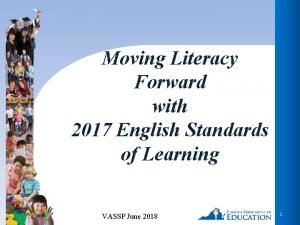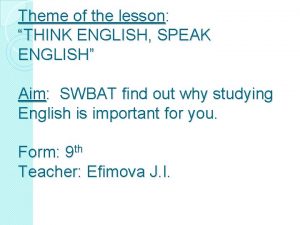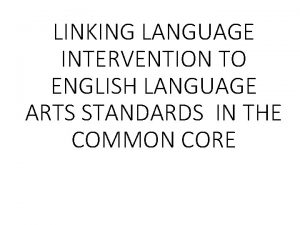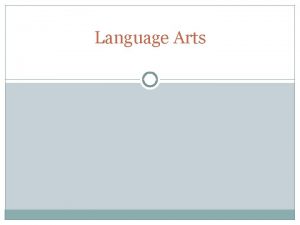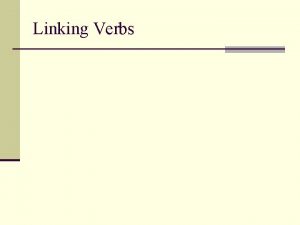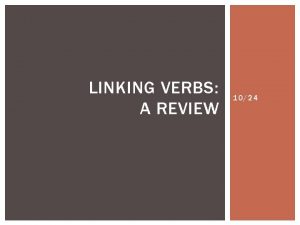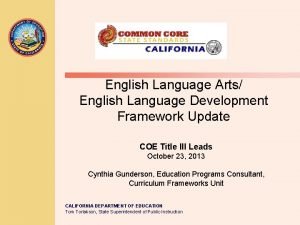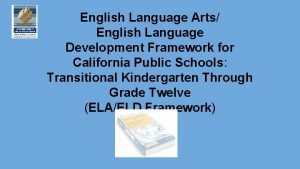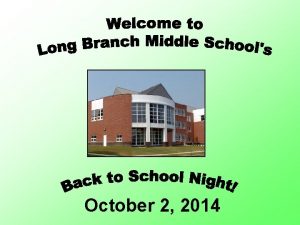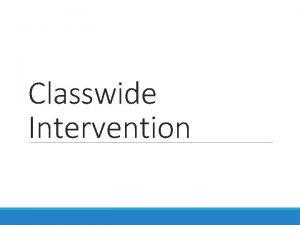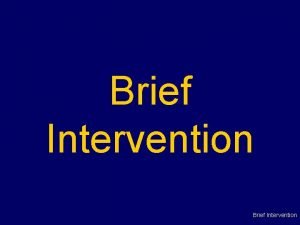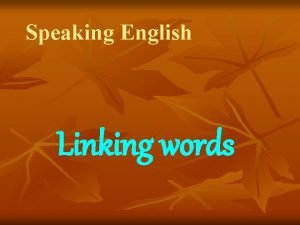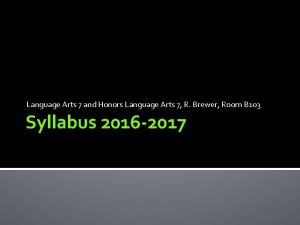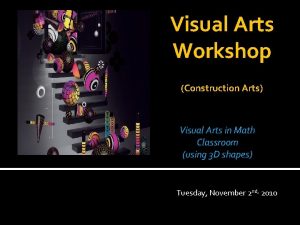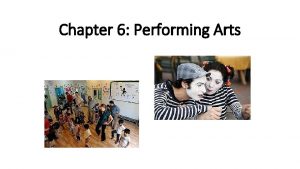LINKING LANGUAGE INTERVENTION TO ENGLISH LANGUAGE ARTS STANDARDS






















































- Slides: 54

LINKING LANGUAGE INTERVENTION TO ENGLISH LANGUAGE ARTS STANDARDS IN THE COMMON CORE

Moore & Montgomery 2018:

Power Point Outline** • I. Review of Purpose of Common Core State Standards • II. Practical Intervention Strategies: Speaking and Listening Standards • III. Practical Intervention Strategies: Language Standards

I. PURPOSE COMMON CORE STATE STANDARDS (REVIEW) • A. Introduction

B. English Language Arts Standards** • Reading • Writing • Speaking and Listening*** • Language***

Not on exam—in California Educator:

C. Speaking and Listening Standards** • Prepare students to acquire, analyze, and present increasingly complex information through listening, speaking, and use of media • Develop these skills in 1: 1, small group, and whole-class academic environments

D. Language Standards

II. PRACTICAL INTERVENTION STRATEGIES: SPEAKING AND LISTENING STANDARDS** • Two major areas: • 1. Presentation of knowledge and ideas • 2. Comprehension and collaboration

A. Presentation of Knowledge and Ideas—Complete Sentences** • 1. (3 rd grade, standard 6) “The student will speak in complete sentences when appropriate to task and situation in order to provide requested detail or clarification. ”


How do we decide when to use complete sentences?

Therapy activity (to do together in class )** • Using the 3 x 5 index cards, create • 1 card that says “fragment” • 1 card that says “complete” • Create 5 cards with fragments, and 5 cards with complete sentences • With a partner, play the game! The SLP holds up the 2 cards, and the child has to put the fragment cards in one pile and the complete sentence cards in the other pile • (In 2020, show the group your cards via Zoom)


The child (a classmate) has to tell why it is not a correct or complete sentence: ** • It does not have a subject or predicate • It does not express a complete thought • It does not provide enough information or detail

B. Presentation of Knowledge and Ideas--Formal Vs. Informal** • 4 th grade, standard 6: • Differentiate between contexts that call formal English (e. g. , presenting ideas) and situations where informal discourse us appropriate (e. g. , small group discussions); use formal English when appropriate to the task and situation. • I love this because so many children in poverty have difficulty in this area, using informal discourse inappropriately

Teach students that informal speaking is for**

Informal speaking: ** • Everyday conversation • Short, simple sentences • More casual places (e. g. , restaurant, playground) • With friends, family, pets, younger ch • Texting/social media • Talking on phone • Everyday vocab like slang

Formal speaking:

C. Comprehension and Collaboration** • “The student will engage effectively in a wide range of collaborative discussions (one-onone, in groups, and teacher-led) with diverse partners on grade level topics and texts, building on each others’ ideas and expressing their own clearly. ”

Talk about rules for successful conversations:

For older students, you could show this video and ask which rules Jon Snow is violating** • Seth brings Jon Snow to a dinner party

The Topic Maintenance Railroad (Speech. And. Language. Kids. com 2021)

• Show the child the train and explain to** him that each of the train cars represents what we say about that topic. If you say something that isn’t about the topic, then the train car falls off the track. Try to keep all of the train cars on the track. If the child is struggling, print off the train and write what he says during a conversation above each train car and then discuss whether they are about the topic or not.

• Try setting some goals with your child** such as how many turns your child will stay on topic. You can tell your child “There are six cars on this train. Let’s see if you can think of 6 things to say about our topic. ” Then, celebrate with your child once he fills up the train but only write down the things your child says that are on topic.

• Once your child begins to understand** this analogy, you can begin to use it in other settings as well. For example, when your child changes the subject unexpectedly, you can say something like “Wait a minute! We were talking about pizza. You changed the topic. Did your train fall off the track? ”

Right where you are, draw a train on a piece of paper— 2 cars, then 4 cars, then 6 cars; we will share • Pretend you are the SLP and child and think of a topic • Have the “child” add on and write in what she says

We can also use blocks and use a different color if the child introduces a new topic:

https: //www. youtube. com/watch ? v=3 Rj. RZ 9 j. Mfs 0 • Social Skills Training: Taking Turns Speaking • Youtube video

III. PRACTICAL INTERVENTION STRATEGIES: LANGUAGE STANDARDS** • 3 major areas: • 1. Conventions of standard English (grammar, punctuation, reference materials, etc. ) • 2. Knowledge of language (spoken and written conventions) • 3. Vocabulary acquisition and use

A. The student will demonstrate command of the conventions of standard English grammar and usage when writing or speaking**


Derivational morphemes…** • Prefixes and suffixes • Can change whole classes of words • Happy Happily • (adjective) (adverb) • Special • (adjective) Specialness (noun)

Inflectional morphemes…

Forms and their functions: ** • Nouns: person, place, or thing • Verbs: action words • Adjectives: words that describe • Regular plural nouns: add an –s • Irregular plural nouns • Regular verbs: add an –ed for past tense • Add an –ing for doing it right now • Irregular verbs • Comparatives –er, -est

What are some examples of irregular nouns? Irregular past tense verbs?

B. The student will determine or clarify the meaning of unknown and multiple meaning words and phrases based on grade-level content**

1. Common prefixes and their meanings (derivational morphemes)** • Pre- (before) e. g. , predict, precook • Re- (again, go back) e. g. , return, redo • Un- (not, the opposite) e. g. , unhappy, unbend • Dis- (not) e. g. , disable, disagree • Mis- (not) e. g. , misunderstand, misrepresent • De- (not) e. g. , defrost, detangle • Bi- (two) e. g. , bicycle, bilingual

2. Common suffixes and their meanings (derivational morphemes)** • -ful (to be full of) e. g. , hopeful, joyful • -ous (to be full of) e. g. , nervous, joyous • -less (none, without) e. g. , careless, homeless • -able (to be able to) e. g. , believable, teachable • -ment (state of) e. g. , government, achievement

Group Activity** • Pick 2 pages out of your children’s book • Use post its to show 3 different affixes • Share them with us and tell us what the word means

Change! You are in 4 th grade • Listen to the Halloween story read by Dr. R. • Write down all the words you hear that contain bound morphemes

3. Words with multiple meanings (example from grades 6 -8)** • • • Dread Date Crane Company Charge Column Chair tackle strike terrific trace suit like lash mint monitor minor patient

On index cards…** • Choose 2 words and write down what each one can mean • Use each word in a sentence

C. The student will demonstrate understanding of figurative language, word relationships, and nuances in word meanings 1. Idioms

http: //examples. yourdictionary. co m/idioms-for-kids. html** Give it a shot – Try • Speak your mind - Say what you really feel • A piece of cake - Very easy • Slipped my mind - I forgot • Cross your fingers - For good luck • Be in hot water - Be in trouble • It cost an arm and a leg - It was expensive • It’s in the bag - It’s a certainty • Get cold feet - Be nervous • A rip off - Too expensive • Get a kick out of – Enjoy •

• Read between the lines - Find the hidden** meaning • Have mixed feelings - Unsure how you feel • Draw a blank - Can’t remember • Have a change of heart - Changed your mind • Be second to none - Be the best • Get your act together - Behave properly • Play it by ear – Improvise • Have second thoughts - Have doubts • A basket case - A crazy person • Have a shot at - Have a chance • Be in the same boat - Be in the same situation

Draw pictures of 2 idioms on cards and tell us what each one really means in your own words and then use it in a sentence:

2. Antonyms and Synonyms**

Antonyms examples are: ** • Problem-solution • Strong-weak • Vanish-appear • Show-hide • Raw-cooked • Seldom-often • Unique-common • Vacant-full • Deep-shallow • Complex-simple • Create-destroy

Synonyms examples are: ** • • • Careful-cautious Decrease-lessen Mistake-error Hurry-rush Work-labor Ornament-decoration Answer-Solution Pain-Ache Bother-annoy Need-require Leave-depart Faithful-loyal

Write 4 sentences** • 2 sentences need to use one synonym (the more sophisticated one) Circle the synonym. • He was cautious when he crossed the road. • The fly annoyed me when it flew around my head. • The 2 other sentences need to use a pair of antonyms—circle the antonyms. • I don’t want to be weak; I want to be strong, so I work out. • The parking lot was vacant, but it got full fast.

Youtube example of using Fancy Nancy for synonyms: • Go to Celeste Roseberry • Building Vocabulary Skills • Another video: • Tami Reads “Fancy Nancy: Our Thanksgiving Banquet” By: Jane O’Connor

Remember Free Rice

Power Point Outline • I. Review of Purpose of Common Core State Standards • II. Practical Intervention Strategies: Speaking and Listening Standards • III. Practical Intervention Strategies: Language Standards
 Dynamic linking vs static linking
Dynamic linking vs static linking Creative arts grade 8 lesson plans term 2
Creative arts grade 8 lesson plans term 2 Ricas accommodations
Ricas accommodations Rhode island
Rhode island Ricas english language arts
Ricas english language arts Ruae linking questions
Ruae linking questions National 5 close reading
National 5 close reading Levels of language proficiency
Levels of language proficiency Oelpa standards
Oelpa standards Oelpa
Oelpa Factors necessary for service standards are
Factors necessary for service standards are Neli listening rules
Neli listening rules Language arts
Language arts When do we use question mark
When do we use question mark Language arts
Language arts Language arts
Language arts Symbol language arts definition
Symbol language arts definition Reasoning through language arts
Reasoning through language arts Ethos language arts
Ethos language arts Language arts strands
Language arts strands Language arts
Language arts Grand island central school district
Grand island central school district Language arts
Language arts Language arts
Language arts Kristy farnsworth
Kristy farnsworth Language arts
Language arts Language chart
Language chart Grade 5
Grade 5 Aha moment signpost examples
Aha moment signpost examples Language
Language Language arts symbols
Language arts symbols Language arts
Language arts Language arts
Language arts Language arts trailer
Language arts trailer Language arts
Language arts Language arts
Language arts Language arts
Language arts Language arts
Language arts Language arts
Language arts Math science social studies language arts
Math science social studies language arts Language arts
Language arts Language arts
Language arts Bilingual common core standards
Bilingual common core standards Root word jeopardy
Root word jeopardy Sqa higher english understanding standards
Sqa higher english understanding standards Kansas ela standards
Kansas ela standards English content standards
English content standards California content standards english
California content standards english Understanding standards advanced higher geography
Understanding standards advanced higher geography Advanced higher art understanding standards
Advanced higher art understanding standards Higher modern studies understanding standards
Higher modern studies understanding standards 2017 english standards of learning curriculum framework
2017 english standards of learning curriculum framework Understanding standards advanced higher english
Understanding standards advanced higher english Levels of language knowledge
Levels of language knowledge Think in english speak in english
Think in english speak in english


